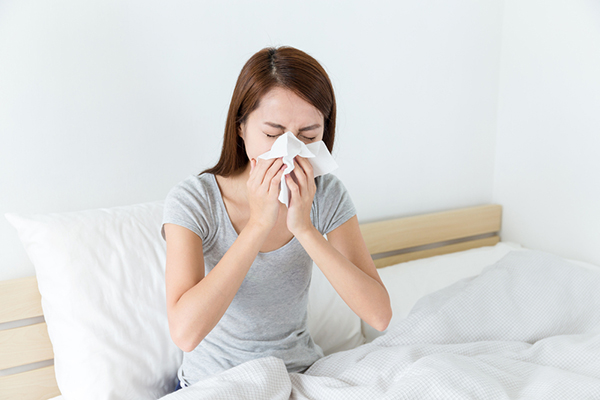
What is ventilation?
It refers to the act of intentionally replacing indoor and outdoor air for the purpose of clearly improving the environment, such as securing indoor air quality or improving the thermal environment.
In general building and house air conditioning environments, temperature control by heating and cooling equipment can be satisfactory, but indoor air pollution due to lack of ventilation is a serious situation. In order to exhaust this polluted air and always supply fresh air, it is important to ensure ventilation by forced supply and exhaust using a ventilation device.
The total heat ventilator is a nationally-approved ventilation system that always provides fresh and clean air by removing numerous harmful substances from the indoor space and discharging polluted air.
Nowadays, buildings are designed to actively reduce energy and heat loss due to increased energy costs, which causes serious damage to the human body and building structures as moisture and contaminated air generated indoors cannot escape.

Changes in the type of indoor residence
WHO Research Results (2000.9 Official Gazette)
The WHO estimates that the death toll from air pollution is up to 3 million per year, especially 2.8 million from indoor air pollution.
Indoor pollutants are 1,000 times more likely to be delivered to the human body's lungs than outdoor pollutants, and acute bronchial mortality is expected to be reduced by 4-8% when indoor pollution is reduced by 20%.
The source of indoor air pollution.
Modern buildings actively aim to design to reduce energy and heat loss, and there are pollutants harmful to the human body indoors, including chemicals generated from building materials and interior materials.
As this indoor air is not exchanged smoothly, contaminated air is causing serious harm to the human body of the occupant, such as atopy or deterioration of health.

01
Main room
- Air freshener : ethanol that causes headache and dizziness, isopropanol.
- Wallpaper : Formaldehyde, toluene, which causes asthma, atopy, headache, and insomnia
- Insulation : Formaldehyde, xylene, asbestos, which causes decreased immune function, dizziness, and allergies.
- New furniture : excrement of formaldehyde and mites that cause allergies, headaches, and dizziness.

02
Kitchen
- City gas : Carbon monoxide, formaldehyde, nitrogen dioxide, sulfur dioxide, which causes impaired immune function, bronchitis, and lung damage.
- Cooking utensils and plumbing : Bad odors and bacteria that cause food poisoning and various cancers, radon
- Paint : Volatile organic chemicals that cause atopy, asthma, infectious diseases, genetic modification, etc.

03
Living room
- Carpets, curtains, new furniture, sofas : formaldehyde, mites that cause allergies, headaches, and infectious diseases
- Flooring material : formaldehyde, toluene, xylene, which cause allergies and various cancers
- Pet products : Excrement and fur that cause bacteria, weakened immunity, etc.
- Bathroom : Styrene, PVC, plastic that causes infectious diseases, genetic modification, etc.
- Adhesive : Volatile organic compounds that cause atopy, asthma, infectious diseases, genetic modification, etc.
Effects of carbon dioxide (CO₂)
※ You can check the ticket with the left and right scrolls.
| Concentration(ppm) |
Effect of change in concentration |
| ~450 |
Levels for healthy ventilation |
| ~700 |
Indoor level that doesn't cause health problems even if you stay for a long time. |
| ~1,000 |
A level with no health damage, but a feeling of discomfort |
It does not mean that CO₂ itself is harmful, but that it is used as an indicator of pollution under the assumption that the physical and chemical properties of the air deteriorate in proportion to the increase in CO₂. |
| ~2,000 |
Level at which changes in condition occur, such as feeling sleepy |
| ~3,000 |
A level at which health damage begins to occur, such as when there are people who feel stiff shoulders and headaches due to significant defects |
| ~4,000 |
A level that causes symptoms such as headache and dizziness in the worst case, and harms health for a long time |
| ~5,000 |
Long-Term Safety Limits (American Labor Health) ACGIH, Workers' Office Rules |
| ~20,000 |
Breathing depth, intake increased by 30%. |
| ~30,000 |
Work aging, changes in physiological function, and double the respiratory rate. |
| ~50,000 |
Stimulates the respiratory center, increasing the depth and number of breaths. Dangerous with prolonged breathing time. When accompanied by a deficiency of O₂, the disturbance occurs quickly and becomes decisive. |
| ~80,000 |
Breathing for 10 minutes causes severe dyspnea, hot flashes, and headaches. When accompanied by a deficiency of O₂, the disturbance becomes more pronounced. |
| ~180,000 More than |
fatal |











 KOR
KOR CHN
CHN